📍 My YouTube subscribers have been dropping psychological analyses that honestly make me wonder if they’re secretly therapists. Today I’m sharing two completely different but equally brilliant takes on Beom-seok’s psychology and why that devastating ring scene was always inevitable.
📢 Fair Use Notice
This post contains copyrighted material from “Weak Hero” (© Wavve/Netflix) used for educational analysis, criticism, and commentary purposes under fair use doctrine. All rights belong to original creators.

My Subscribers Are Basically Psychology Professors at This Point 📍
✨ You know what I love about having 🔗 a YouTube channel dedicated to Weak Hero analysis? The comments section has turned into this incredible hub where fans share insights that are honestly more sophisticated than some academic papers I’ve read.
After posting my analysis of Beom-seok’s obsession with Su-ho, I got hit with not one, but TWO subscriber comments that completely blew my mind. Both tackled the same question – why did Beom-seok destroy Su-ho in that underground ring – but came at it from totally different psychological angles.
What’s fascinating is how both analyses are brilliant in their own way, yet they disagree on some fundamental points about Beom-seok’s psychology. It’s like watching two expert therapists debate a case study, except these are just passionate K-drama fans who happen to have incredible insight into human psychology.
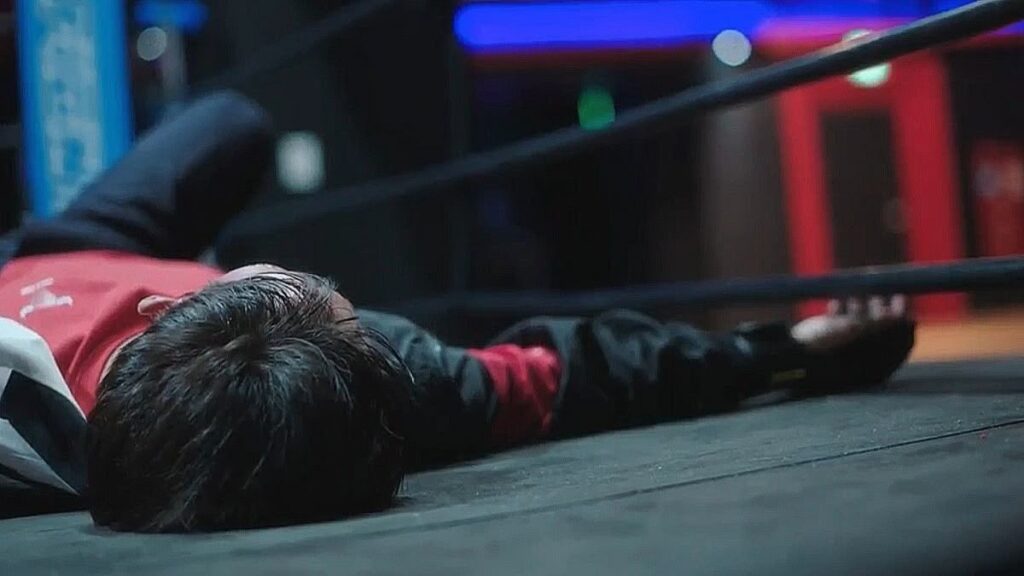
The Inner Child Theory: When Trauma Creates a Broken Little Boy
💭 The first analysis came from @riefweren, and honestly, reading it made me sit back and wonder if this person has a psychology degree they’re not telling us about. Their take focused on what they called Beom-seok’s “inner child” – basically arguing that underneath all that violence and manipulation was a traumatized little boy who never learned how to process love or abandonment in a healthy way.
According to this subscriber, every time Su-ho showed Beom-seok kindness, you could literally see this inner child light up in his expressions.
They described it as someone “tasting warmth for the first time,” which honestly gave me chills because it’s so accurate.
But here’s where it gets psychologically complex – because that warmth was so unfamiliar to Beom-seok, he became addicted to it, then terrified of losing it, and finally resentful toward the very person giving it to him.
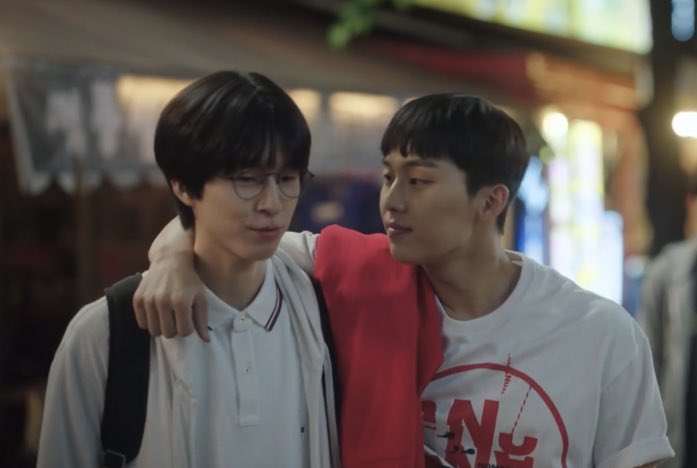
The subscriber explained that:
Beom-seok’s constant thought pattern was “They’re only with me now, but what if they leave too?” This abandonment fear explains why he overreacted to every little thing – his inner child was basically in permanent panic mode, expecting to be left behind again.
But what really got me was their insight about Su-ho specifically. They said Su-ho wasn’t just a friend to Beom-seok – he was the kind of older brother figure Beom-seok never had. Su-ho’s boldness reminded him of his father’s authority, but Su-ho also gave him warmth and protection. This created a psychological confusion that Beom-seok’s traumatized mind couldn’t handle.
The ring scene, according to this analysis,
was the moment when that idealized brother figure showed disappointment in him. It broke something fundamental in Beom-seok’s psychology, and the violence was basically a traumatized child destroying the thing he loved most because he couldn’t bear the potential of losing it.
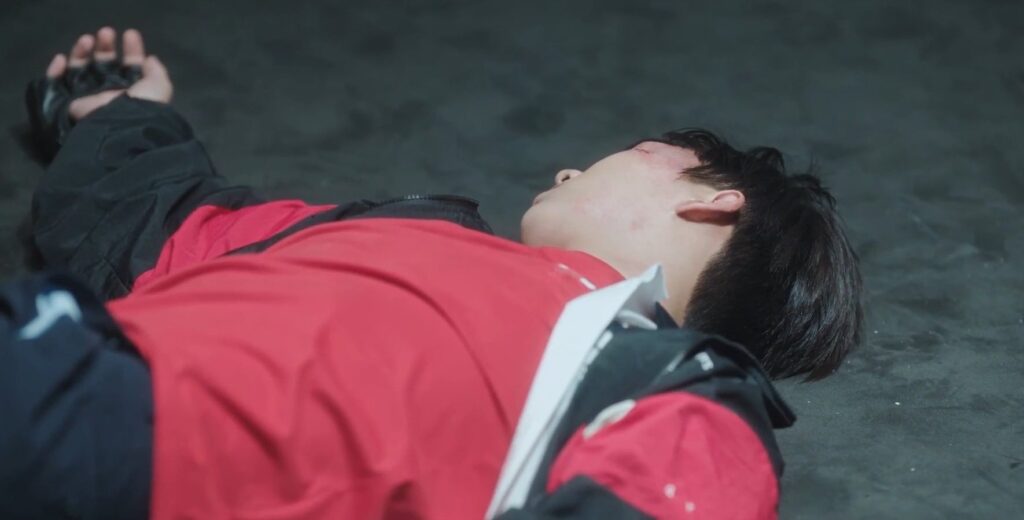
The Power Dynamics Theory: When Love Becomes Control
🔥 Then @gomesbandrey dropped their analysis, and it took a completely different approach that honestly made me rethink everything. While the first subscriber saw a broken inner child, this one saw something much more calculated and disturbing.
This subscriber argued that there never was an idealized version of Su-ho in Beom-seok’s mind. Instead, the cafeteria scene was when Beom-seok decided that Su-ho’s power was something he needed to eliminate – just like he’d learned to eliminate his adoptive father’s power and his bullies’ power.

“You really are pathetic”
What really struck me about this analysis was how they interpreted Su-ho’s final interactions with Beom-seok. They pointed out that when Su-ho said “I’m sorry I disappointed you,” he wasn’t speaking to a beloved friend – he was showing basic human respect. And when he finally said “You really are pathetic,” even that respect was gone.
This subscriber also had a fascinating take on Beom-seok’s psychology around love and violence.
They suggested that Beom-seok had learned from his adoptive father that when you love someone and they disappoint you, you beat them up. The adoptive father supposedly loved Beom-seok enough to adopt him and save him from poverty, right? But he also beat him when he messed up. So in Beom-seok’s twisted logic, when Su-ho did something he didn’t like, Su-ho deserved to be beaten too.
The ring scene, according to this analysis, was Beom-seok treating Su-ho the way his adoptive father had treated him – with violent “love” that was really about control and power.
The Food Connection: How Beom-seok Lost His Language of Love
One detail that really got to me from the second analysis was about food as a love language. The subscriber pointed out that Beom-seok initially tried to show affection the same way Si-eun learned to – through food and small gifts. But when Su-ho and Si-eun didn’t accept his money or his attempts at buying their friendship, Beom-seok lost his way of saying “I love you guys.”
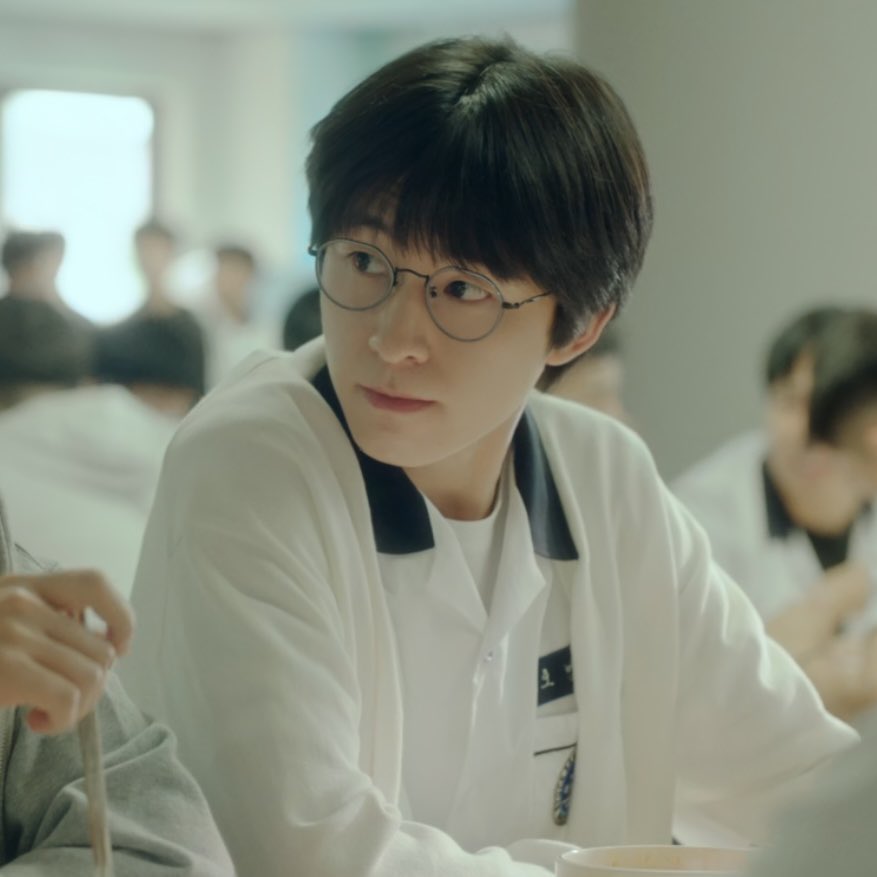
Unlike with Yeong-bin’s group where he was clearly buying their loyalty, with Su-ho and Si-eun he was genuinely trying to express care. When that didn’t work, he had no other healthy way to communicate his feelings. Violence became his only remaining strategy for showing love, which is absolutely heartbreaking when you think about it.
Two Different Views, Same Tragic Ending
What fascinates me about these two analyses is how they can look at the same character and scenes but come to different conclusions about Beom-seok’s core psychology. The first sees a broken child acting out of trauma and abandonment fear. The second sees someone who learned twisted patterns of love and control from his abusive environment.
But both analyses agree on the fundamental tragedy – Beom-seok never learned healthy ways to process or express intense emotions. Whether you see him as a traumatized child or as someone with learned patterns of violent control, the result is the same: a young person whose psychology was so damaged that violence became his primary language for dealing with love, disappointment, and loss.
The Romantic Feelings Question: Does It Even Matter?
Both subscribers touched on whether Beom-seok’s feelings for Su-ho were romantic, and I found their different takes interesting. The first subscriber seemed more convinced that there were romantic elements, while the second acknowledged the possibility but focused more on the “attraction” that twisted up Beom-seok’s mind.

What I appreciate about both analyses is that they recognize the romantic feelings question isn’t really the point. Whether Beom-seok was gay, straight, or somewhere in between, his psychology was fundamentally damaged by trauma and abuse. The intensity of his feelings toward Su-ho – romantic or not – was filtered through such a distorted lens that it was always going to end badly.
Why These Analyses Matter: Understanding Real Psychology Through Fiction
What makes both of these subscriber comments so valuable is how they help us understand not just fictional psychology, but real-world patterns of trauma, attachment, and violence. The first analysis gives us insight into how childhood trauma creates ongoing psychological vulnerabilities. The second shows us how abuse teaches people destructive patterns that they then repeat in their own relationships.
Both perspectives are probably true to some extent. Beom-seok likely was a traumatized child whose inner wounds never healed, AND he was someone who learned unhealthy patterns of expressing love and exerting control. Real psychology is usually that complex – people aren’t just one thing.
My Takeaway: When Fans Become Teachers
♥️ Reading these analyses reminded me why I love making content about Weak Hero so much.
This show created characters so psychologically realistic that viewers can apply genuine psychological frameworks to understand their behavior. And when subscribers share insights this profound, it elevates the viewing experience for everyone.
Both @riefweren and @gomesbandrey helped me see Beom-seok’s character from new angles, and I’m honestly grateful for their willingness to share such thoughtful, detailed analyses. This is what great storytelling does – it creates space for these kinds of deep, meaningful discussions about human psychology and behavior.
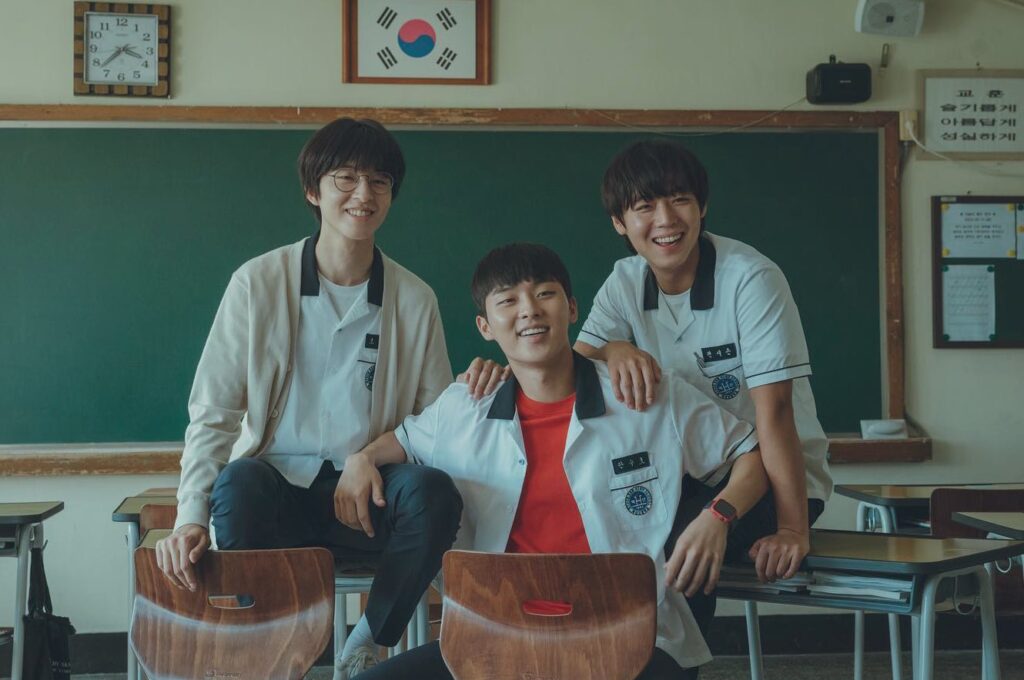
🥊 The ring scene will always be devastating to watch, but understanding the psychology behind it – whether you see it as childhood trauma exploding into violence or learned patterns of abusive love – helps us process why this fictional tragedy feels so real and hits so hard.
💭 What do you think about these two different psychological takes on Beom-seok’s attack on Su-ho? Do you lean more toward the inner child theory or the power dynamics theory? Or maybe you have your own psychological interpretation of why that ring scene was so inevitable? Share your thoughts in the comments below!
Want to hear more about the complex psychology of Weak Hero’s characters? Check out my other analyses 🔗 Discussing Weak Hero’s Script Book & Beom-seok’s Character Depth #weakheroclass1 where I break down the cultural context and psychological insights that make this show so compelling!
🔗 Related Posts by Character & Language
📚 Si-eun (시은) Analysis
English Posts
- Si-eun’s Episode 8 Revenge: Why the “Implausible” Critique Completely Misses the Point
- Why Si-eun is a Character Magnet: The Psychology Behind Weak Hero’s Most Compelling Relationships
- Si-eun’s Hidden Violence: An Exploration
- Si-eun’s Revenge Debate: Core Fan Comments Compilation
🥊 Su-ho (수호) Analysis
English Posts
- Su-ho’s Lost Comedy Gold: The Wordplay That Made Weak Hero Fans Fall in Love (But English Subtitles Missed Everything)
- The Untold Story of Su-ho and Beom-seok: Why Their Friendship Was Doomed from the Start
Korean Posts
💔 Beom-seok (범석) Analysis
English Posts
- When Dreams Become Prison: Analyzing Beom-seok’s Boxing Ring Appearance in Si-eun’s Dreams
- When Subscribers Become Psychology Experts: Two Brilliant Takes on Why Beom-seok Destroyed Su-ho in That Ring
- Beom-seok’s Obsession with Su-ho: The Tragic Psychology Behind Weak Hero’s Most Complex Relationship
⚡ Seong-je (성제) Analysis
English Posts
🤝 Character Dynamics
English Posts
- Su-ho and Si-eun’s Relationship: When Fans Ask the Hard Questions About Weak Hero’s Most Debated Bond
- Understanding Yeong-i: The Character Who Reveals Everything About Weak Hero’s Heart
- Was Yeong-i Added to Tone Down the Bromance? When Subscribers Drop Literary Masterpieces in My Comments
- Jun-tae’s Japanese Mystery and the Heartwarming Go-tak Friendship in Weak Hero Class 2
🎭 Behind-the-Scenes & Analysis
English Posts
- Weak Hero Class 1 Script Book: Behind-the-Scenes Secrets That Will Change How You See the Show
- Script Book vs Final Cut: The Dream Scene That Made Us All Cry
- The Complete Behind-the-Scenes Story of Weak Hero Class 1 – Answering Subscriber Questions
- Weak Hero Class Change Video Explanation: Actors Switching Roles
- Weak Hero Deleted Scene Delivery! Beuksan High’s #1 Taking Down Bullies
🌍 Fan Community & Cultural Analysis
English Posts
- Weak Hero Fans Are Going INSANE and I’m Here for It: The Comments That Broke My Brain
- The Joy of Global Connection: Discussing Weak Hero’s Most Complex Relationships with Fans Around the World
- When International Fans Decode Korean Bromance: Why Weak Hero Reads as BL Overseas
- Three Questions That Reveal Weak Hero’s Hidden Korean Realism
- Why These Three Friends Always Sit Together During Exams (And Other Translation Secrets)
Korean Posts
📊 Quick Navigation by Interest
⚡ Character Dynamics:
- Su-ho and Si-eun’s Relationship
- Beom-seok’s Obsession with Su-ho
- When International Fans Decode Korean Bromance
🧠 Psychology Deep Dives:
- When Subscribers Become Psychology Experts
- Si-eun’s Episode 8 Revenge
- Why Si-eun is a Character Magnet
🎬 Behind-the-Scenes Content:
🌐 Translation & Cultural Context:
⚠️ Site Policies & Legal Information
✅ About JennieKdrama.com: This blog provides personal fan analysis and reviews of K-dramas, focusing on school action series like ‘Weak Hero.’ All content represents individual opinions and interpretations from a fan perspective, unrelated to official production teams.
⛔️ Copyright Disclaimer: All drama footage, images, and references belong to their respective copyright holders including streaming platforms and original creators. Materials are used minimally for educational criticism and analysis with no intention of copyright infringement.
🚫 Privacy Policy: This site follows standard web policies and does not directly collect personal information beyond basic analytics for content improvement. We use cookies to enhance user experience and may display advertisements.
📳 Contact: For questions or concerns, please use the comment sections or contact forms provided. This is fan-created content respecting all original copyrights – we are not responsible for any losses or damages resulting from our content interpretations.

Wow, I didn’t expect my theory to be mentioned in your analysis — that really caught me by surprise. Thank you so much for noticing it! It means a lot coming from you. <3
You have no idea how much your analysis helped develop my ideas ♥️ I’m sorting some of the early rambling I did and I’m doing all the precious and grateful commenters and archiving them on my blog. Thank you so much 🫶